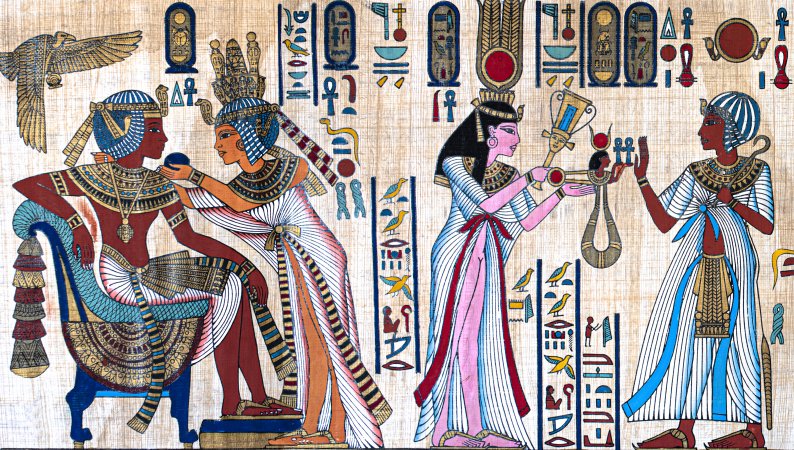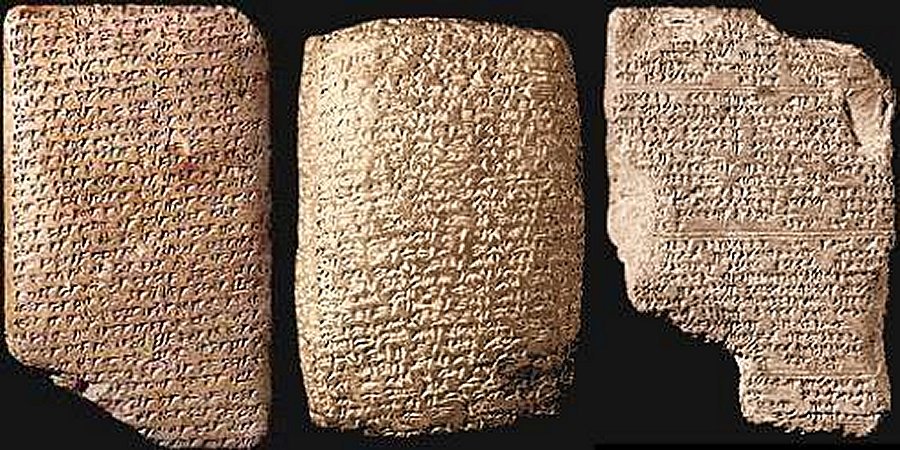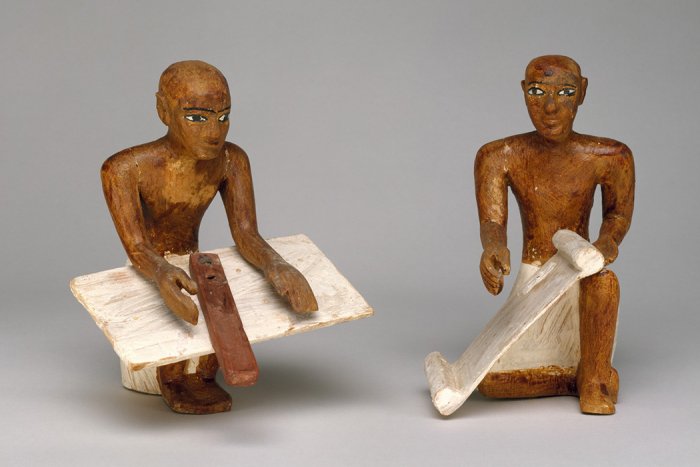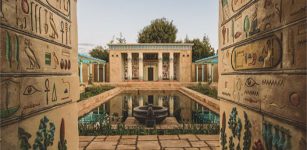Letters Reveal How Ancient Egyptians Argued With Friends And What Angered Them
Ellen Lloyd - AncientPages.com - As time passes, every society changes one way or the other, but some things, like human behavior, will always remain the same, more or less. Feelings like anger, disappointment, frustration, and happiness are universal and independent of time and place.
Ancient peoples’ values may have changed, but negative and positive feelings will always be part of human nature.

Ancient Egyptians had the same feelings as we today, and could be angry, frustrated, or simply just happy. Credit: AliaksandrBS - Adobe Stock
By studying several letters from Deir el-Medina, a village comprising artisans working on pharaonic tombs, Egyptologist Deborah Sweeney has gained a unique insight into how ancient Egyptians expressed frustration, confusion, and anger to friends or family members.
“Although Papyri Deir el-Medina IV, V and VI have been published, translated and included in anthologies of Egyptian texts, their interest is by no means exhausted. Not only do these texts contain interesting observations on friendship, which help us understand how the ancient Egyptians understood this relationship, they also increase our awareness of what the Egyptians actually did when they quarreled and made up. This study forms part of a wider research project on the themes of sin, forgiveness, and punishment in ancient Egypt as reflected in everyday texts such as personal correspondence.” 1
Whether political, military or purely personal, studying ancient correspondence provides valuable knowledge about human relationships.
Studies of 382 known clay cuneiform tablets, known as the Amarna Tablets, or simply Amarna Letters as they are called these days, have proven important to understand ancient Egyptians’ contacts with their neighbors.

Examples of "The Amarna Letters" were discovered in 1887. There are 382 known clay cuneiform tablets, whose contents shed light on Egyptian relations with Babylonia, Assyria, Mitanni, the Hittites, Syria, Palestine and Cyprus. They are important for establishing both the history and chronology of the period. Credit: EgyptOnline.com
The Amarna Letters are mostly diplomatic letters (with a few myths and epics) dated to an interesting historical period in ancient Egypt, related to the reigns of pharaoh Akhenaten of the 18th Dynasty of Egypt and his wife Nefertiti, and Amenhotep III (1402-1364). The tablets “deal with a variety of subjects, such as exchange of gifts between rulers, news about events in distant Phoenician cities: Byblos, Tyre, various requests regarding food, military affairs, and diplomatic marriages.” 2
The Amarna Letters are of great historical value, but it’s also very interesting to learn how ordinary people interacted with their friends and family.
The ancient letters studied by Sweeney reveal how people reacted when they were ignored or someone did not keep their part of the bargain. One ancient writer complained about failing as a friend. Another one was disappointed someone hadn’t been in touch for long.
Just like in our modern society, ghosting friends and ignoring agreed-upon favors acted as violations of the “social obligations” of friendship.”
 Scribes from Meketre's Model Granary ca. 1981–1975 B.C. Credit: MET
Scribes from Meketre's Model Granary ca. 1981–1975 B.C. Credit: MET
One Egyptian scribe, “named Nakhtsobk writes to “the crew member Amennakhte.” After hailing his longtime friend and wishing him well, Nakhtsobk says plaintively, “What offence have I done against you? Aren’t I your old eating companion?”
Nakhtsobk doesn’t understand what he’s done wrong for Amennakhte to ignore him and, in fact, try to get him banned from the entire village. This is hardly Nakhtsobk’s understanding of being a good friend! What could have caused Ammenakhte to not only discard their longstanding bond but to actively try to keep Nakhtsobk out of his town? We’ll never know, but such a severe action, to sever a friendship, is one that’s all too timeless.” 3
In another letter, an anonymous writer expresses frustration asking, “What’s the matter with you?” The writer snarks that he’s never been able to understand the addressee’s behavior.” 3
It seems the writer has assumed that “friends care for each other, help one another out and comply with each other’s requests,” Sweeney notes—a social contract the addressee has violated.
Yet, another writer, whose name we do not know, “ tells the addressee that a woman—likely someone related to, or associated with, the addressee—has run away to Deir el-Medina and he has taken her in. He’s asking the addressee for rations—ointment, in this case—to support his new guest; the addressee hasn’t looked after the woman well in the past, he says, and admonishes the addressee to do better going forward. Finally, the writer complains that he‘s always the one who invests time and writes to the addressee—but never vice-versa.” 3
Studies of such ancient correspondence show much, and yet little has changed in society. Social interactions with friends and family can sometimes lead to misunderstandings, disappointments, and broken promises, and whenever it happens, people express their emotions in letters. The ancient Egyptian letters constitute universal behaviors in every human society.
Written by Ellen Lloyd – AncientPages.com
Expand for references- Sweeney, Deborah. "Friendship and Frustration: A Study in Papyri Deir El-Medina IV-VI." The Journal of Egyptian Archaeology84 (1998): 101-22. Accessed October 18, 2020.
- Sutherland - The Amarna Letters: Diplomatic Correspondence In Ancient Egypt – AncientPages.com
- Carly Silver - How to Fight with Friends in Ancient Egypt, JStor Daily
More From Ancient Pages
-
 Stone Toilet Of A First Temple Period Luxury Villa Reveals The Jerusalem Elite Suffered From Infectious Disease
Archaeology | Jan 4, 2022
Stone Toilet Of A First Temple Period Luxury Villa Reveals The Jerusalem Elite Suffered From Infectious Disease
Archaeology | Jan 4, 2022 -
 Why Were The Jews Exiled To Babylon?
Ancient History Facts | Jan 14, 2020
Why Were The Jews Exiled To Babylon?
Ancient History Facts | Jan 14, 2020 -
 Disappearance Of Neanderthals: Were Inbreeding And Demographic Shifts Responsible?
Archaeology | Nov 28, 2019
Disappearance Of Neanderthals: Were Inbreeding And Demographic Shifts Responsible?
Archaeology | Nov 28, 2019 -
 World’s First Recreated Ancient Egyptian Garden Is Now Open To The Public
News | May 17, 2022
World’s First Recreated Ancient Egyptian Garden Is Now Open To The Public
News | May 17, 2022 -
 Elli – Norse Goddess And Symbol Of Old Age That No One Ever Could Defeat
Featured Stories | Dec 21, 2017
Elli – Norse Goddess And Symbol Of Old Age That No One Ever Could Defeat
Featured Stories | Dec 21, 2017 -
 1,400-Year-Old Iron Hammer And Nails Among Findings At Sanhedrin, Western Galilee’s Usha
Archaeology | Nov 6, 2019
1,400-Year-Old Iron Hammer And Nails Among Findings At Sanhedrin, Western Galilee’s Usha
Archaeology | Nov 6, 2019 -
 Legend Of Evil Spearfinger And The Cherokee Who Were Guided By Celestial Beings
Featured Stories | Feb 17, 2020
Legend Of Evil Spearfinger And The Cherokee Who Were Guided By Celestial Beings
Featured Stories | Feb 17, 2020 -
 Ancient Civilizations Invented Alcohol 10,000 Years Ago
Ancient History Facts | Sep 13, 2016
Ancient Civilizations Invented Alcohol 10,000 Years Ago
Ancient History Facts | Sep 13, 2016 -
 Chagyrskaya Female Neandertal That Lived 60,000-80,000 Years Ago – Studied
Archaeology | Jun 23, 2020
Chagyrskaya Female Neandertal That Lived 60,000-80,000 Years Ago – Studied
Archaeology | Jun 23, 2020 -
 Trident: Powerful Religious Symbol Found In Many Ancient Cultures
Ancient Symbols | Dec 4, 2019
Trident: Powerful Religious Symbol Found In Many Ancient Cultures
Ancient Symbols | Dec 4, 2019 -
 Mosaics With Oceanus And Medusa In Tomb Of Ancient City Of Perge, Turkey
Archaeology | May 16, 2017
Mosaics With Oceanus And Medusa In Tomb Of Ancient City Of Perge, Turkey
Archaeology | May 16, 2017 -
 Remarkable 5,000-Year-Old Crystal Dagger Discovered In Megalithic Tomb Of Montelirio Tholos
Archaeology | Feb 13, 2021
Remarkable 5,000-Year-Old Crystal Dagger Discovered In Megalithic Tomb Of Montelirio Tholos
Archaeology | Feb 13, 2021 -
 Pazyryk Carpet: Extraordinary Craftsmanship Of Siberian Iron Age Textile Dyers
Archaeology | Mar 5, 2021
Pazyryk Carpet: Extraordinary Craftsmanship Of Siberian Iron Age Textile Dyers
Archaeology | Mar 5, 2021 -
 Radiocarbon Dating Method Needs Adjustments – Researchers Say
Archaeology | Apr 1, 2020
Radiocarbon Dating Method Needs Adjustments – Researchers Say
Archaeology | Apr 1, 2020 -
 Location of Roman Ballista Machines During The Siege Of Jerusalem – Uncovered
Archaeology | Aug 17, 2022
Location of Roman Ballista Machines During The Siege Of Jerusalem – Uncovered
Archaeology | Aug 17, 2022 -
 Ancient Monuments The World Is Not Allowed To See – Reason For Denial? – Part 1
Ancient Mysteries | Aug 24, 2020
Ancient Monuments The World Is Not Allowed To See – Reason For Denial? – Part 1
Ancient Mysteries | Aug 24, 2020 -
 Being Anglo-Saxon Was A Matter Of Language And Culture, Not Genetics
Archaeology | Jun 23, 2021
Being Anglo-Saxon Was A Matter Of Language And Culture, Not Genetics
Archaeology | Jun 23, 2021 -
 Cerne Abbas Giant: Researchers Attempt To Determine Age Of Giant Figure
Archaeology | Mar 27, 2020
Cerne Abbas Giant: Researchers Attempt To Determine Age Of Giant Figure
Archaeology | Mar 27, 2020 -
 Riddle Of The Hanging Gardens Of Babylon – Highly Advanced Technologies – Part 2
Ancient Mysteries | Jun 11, 2019
Riddle Of The Hanging Gardens Of Babylon – Highly Advanced Technologies – Part 2
Ancient Mysteries | Jun 11, 2019 -
 World’s Oldest Dictionaries Are 4,500-Year-Old Cuneiform Tablets Discovered In Ebla
Ancient History Facts | Aug 19, 2016
World’s Oldest Dictionaries Are 4,500-Year-Old Cuneiform Tablets Discovered In Ebla
Ancient History Facts | Aug 19, 2016
